Those dark spots in your garden don’t have to stay empty! If you’re tired of looking at bare patches where the sun barely reaches, I’ve got good news for you. These shade-loving perennials are hard to kill and will come back year after year, even in areas that get little direct sunlight.
Some need regular watering, while others can handle drier conditions once they’re settled in. Most of these plants won’t demand much of your time – just a quick cleanup in spring to make room for new growth, and they’ll handle the rest themselves.
Understanding Shade Gardening – Types of shade (dappled, partial, full)
Dappled shade occurs when light filters through tree canopies, creating a mix of sun and shade throughout the day.
Partial shade typically means 3-6 hours of direct sunlight, usually in the morning or late afternoon, while full shade receives less than 3 hours of direct sun or only reflected light.
Challenges and benefits of shade gardens
Shade gardens can present challenges such as poor soil conditions, root competition from trees, and limited plant choices.
However, they also offer benefits like reduced water needs, protection from harsh sunlight, and the opportunity to create cool, tranquil outdoor spaces with lush, verdant plantings.
Here are 12 foolproof perennials for your shade garden:
1. Hostas
Hostas unfurl their lush, broad leaves in spring, creating beautiful ground cover in shady spots. These hardy perennials come in green, blue, and variegated patterns that light up dark corners of the garden.
Though mainly grown for foliage, hostas send up purple or white flower stalks in summer that attract hummingbirds and add vertical interest to shaded beds.
2. Astilbes
With plumes of feathery flowers rising above fern-like foliage, astilbes add texture and color to shady gardens. These low-maintenance perennials bloom from early to late summer in shades of pink, red, white, and purple.
The flowers last for weeks and dry beautifully on the plant, providing interest through fall and winter.
Even without blooms, the glossy, dark green leaves create a lush backdrop that keeps garden beds looking full all season long.
3. Ferns
Among the most reliable plants for shady spots, ferns have been thriving in woodlands for millions of years. These hardy perennials come in many sizes and shapes, from tiny 6-inch plants to towering 6-foot specimens.
Their feathery fronds unfurl in spring, creating a lush green backdrop that lasts through fall. Most ferns prefer moist, well-drained soil and don’t mind humid conditions, making them perfect partners for hostas and other shade-loving plants.
Once established, they’re generally carefree and won’t tempt deer or other garden pests.
4. Heucheras
These hardy perennials are workhorses in shady spots, offering year-round interest with their different-colored leaves in shades of purple, lime, orange, and silver.
Also known as coral bells, heucheras don’t lose their looks when temperatures drop – the leaves keep their rich colors through winter in many regions. Small bell-shaped flowers appear on tall stems in spring and summer, attracting hummingbirds and adding movement to borders.
You’ll find them easy to grow in containers or garden beds, and they make good neighbors for ferns and hostas since they don’t compete aggressively for space.
5. Bleeding Hearts
A true springtime classic, Bleeding Hearts unfold like tiny strings of dangling heart-shaped flowers in pink and white shades. These graceful perennials pop up early in the season and prefer partial shade gardens where they’ll bloom for weeks.
Not bothered by most pests or diseases, they pair well with hostas and ferns in woodland settings. The fern-like foliage adds interest even after the flowers fade, though the plants often go dormant in summer’s heat – just plant late-blooming perennials nearby to fill in the gap.
6. Japanese Forest Grass
One of the most useful shade-loving ornamental grasses, Japanese forest grass adds graceful movement and texture to any shady spot. The slender leaves emerge bright green in spring and turn to gold as summer progresses, creating soft cascading mounds that reach about 12 inches tall.
Unlike many fussy shade plants, this low-maintenance perennial handles poor soil and doesn’t attract deer or other pests.
The arching foliage catches even the slightest breeze, bringing a peaceful rustling sound and gentle motion that makes it perfect for woodland gardens or border edges.
7. Lungwort
Early spring bloomers that light up shady spots, lungworts combine interesting foliage with pink-to-blue blossoms that open in March and April.
The leaves often have silvery or white spots, giving them a unique speckled appearance that adds interest even after the flowers fade. These easy-care perennials don’t attract deer or rabbits, and they spread slowly to form effective groundcovers under trees.
Unlike many shade plants, lungworts keep their leaves through winter in most regions, providing year-round garden appeal with minimal maintenance.
8. Solomon’s Seal
A reliable woodland plant that thrives in shady spots, Solomon’s Seal features graceful arching stems lined with oval green leaves that dance in the breeze. In late spring, small white bell-shaped flowers dangle beneath the stems like tiny lanterns, followed by blue-black berries in fall.
Native to North American forests, this perennial spreads slowly through underground roots, creating natural colonies over time. The foliage turns an appealing yellow in autumn before dying back for winter, and deer tend to leave these plants alone.
Perfect for woodland gardens or shaded borders, Solomon’s Seal pairs well with other shade-lovers like ferns and hostas.
9. Toad Lilies
These late-season bloomers bring a touch of magic to shady garden spots when most other flowers have finished their show. Growing 2-3 feet tall, toad lilies sport unique orchid-like flowers in purple, white, or pink, often speckled with darker spots that give them their quirky name.
They’re surprisingly hardy for such exotic-looking plants and do well in moist, well-drained soil beneath trees or along woodland paths.
Unlike many shade plants that bloom in spring, toad lilies wait until fall to put on their display, making them good companions for hostas and ferns whose foliage starts looking tired by season’s end.
10. Bergenia
With its large, leathery leaves and clusters of pink or purple flowers, bergenia brings life to shady spots in the garden throughout the year. In spring, the thick stems hold bell-shaped blooms above the glossy green foliage, creating a neat and full appearance.
As winter approaches, the leaves take on reddish-bronze tones, adding interest even in the coldest months. Since it grows well in tough conditions and spreads gradually, bergenia makes an effective ground cover under trees or along borders.
Plant it with ferns or hellebores to create layers of different leaf textures, and enjoy how it maintains its structure when other perennials have faded away.
11. Brunnera
Brunnera brings both beauty and reliability to shady garden spots. Its heart-shaped leaves create a nice groundcover, while clusters of small blue flowers float above the foliage in spring, looking like a cloud of forget-me-nots.
Once established, this tough perennial doesn’t mind less-than-perfect soil conditions and even tolerates dry shade under trees. By pairing brunnera with ferns or hostas, you can build an interesting tapestry of foliage textures that looks good all season long.
And if you choose varieties with silver-marked leaves, they’ll add a bit of brightness to dark corners of your garden.
12. Foamflower (Tiarella)
Foamflower has earned its spot as a reliable ground cover for shady gardens. Its soft green leaves form neat mounds near the ground, and in spring, spikes of tiny white or pink flowers rise above the foliage like miniature clouds.
The blooms last for several weeks, attracting early-season pollinators to the garden. After flowering, the leaves continue providing interest with their maple-like shape and occasional burgundy speckling.
Plant it alongside ferns or wild ginger to create a natural woodland setting, where it will gradually spread to fill empty spaces beneath trees and shrubs.
13. Hellebores (Helleborus)
Known as Christmas or Lenten roses, hellebores are shade-loving perennials that bloom in late winter or early spring when most plants are still dormant. Hardy in zones 4-9, these evergreen plants produce nodding flowers in shades of white, pink, plum and pale green.
The leathery, palm-shaped leaves stay attractive all year in most climates. Newer varieties feature double flowers and speckled petals.
Though they prefer moist, well-drained soil rich in organic matter, hellebores are drought tolerant once established.
They spread slowly, forming neat clumps. Popular varieties include ‘Pink Frost,’ ‘Ivory Prince,’ and the black-flowered ‘Onyx Odyssey.’
14. Ligularia
Known for their bold leaves and bright yellow flowers, Ligularia plants bring drama to shady spots in the garden. Most varieties have rounded, dark green leaves up to 16 inches across, though some sport burgundy undersides or serrated edges.
The tall flower spikes appear in late summer, rising 3-6 feet above the foliage. These hardy perennials thrive in moist, rich soil and need protection from hot afternoon sun.
Best suited for zones 4-8, they’ll spread slowly to form impressive clumps over time. Reliable performers in regions with cool summers.
Popular varieties include ‘The Rocket’ with spiky yellow blooms, ‘Britt Marie Crawford’ with purple-black foliage, and ‘Othello’ with orange-yellow daisy-like flowers.
15. Epimedium
Known for its heart-shaped leaves and dainty spring blooms, Epimedium is a low-growing perennial that spreads slowly to form dense mats of foliage. The leaves emerge with bronze tints in spring before turning green, then take on reddish hues in fall.
Small, spider-like flowers appear in April-May, dancing above the foliage in shades of yellow, pink, or white. This tough shade-lover handles dry conditions once established and thrives in zones 5-9.
Plant varieties like ‘Pink Champagne’ with its rose-colored blooms, ‘Sulphureum’ featuring bright yellow flowers, or ‘Niveum’ with pure white blossoms. Deer and rabbit resistant, it performs well in dry shade under trees.
16. Japanese Anemone
Late summer brings a welcome burst of color when Japanese Anemone sends up its elegant flower stalks. Growing in zones 4-8, these reliable perennials spread slowly to form loose clumps of dark green leaves.
The white or pink blooms appear from August through October, floating above the foliage on tall, wiry stems. Popular varieties include ‘Honorine Jobert’ with pure white flowers, ‘September Charm’ featuring rose-pink petals, and ‘Robustissima’ which is extra hardy and disease-resistant.
Though happy in part shade, plants need consistent moisture and shelter from harsh winds. Once established, Japanese Anemone tolerates drought and requires little maintenance.
17. Rodgersia
Fans of architectural plants will love these imposing perennials with their large, textured leaves and airy summer blooms. The palmate foliage grows up to 2 feet wide, providing a dramatic backdrop in shady gardens.
Plumes of cream, pink or white flowers appear in late spring through summer. Hardy in zones 5-8, Rodgersias thrive in rich, moist soil and cool climates. They’re deer resistant and surprisingly easy to grow once established.
Popular varieties include R. aesculifolia with bronzy spring foliage, R. pinnata ‘Superba’ with pink flowers, and R. podophylla with glossy, deeply cut leaves. Best in partial to full shade and protected from hot afternoon sun.
18. Goat’s Beard (Aruncus)
Looking like a tall, feathery plume of white flowers, Goat’s Beard makes a bold statement in shady gardens. Growing 4-6 feet tall, this hardy perennial thrives in zones 3-7 and blooms from early to midsummer.
The plant prefers moist, rich soil and partial to full shade. Native varieties produce creamy white blooms, while cultivars like ‘Kneiffii’ offer finely cut foliage and ‘Child of Two Worlds’ stays more compact.
The dark green, fern-like leaves create interest even when not in bloom. Goat’s Beard tolerates wet conditions but may struggle in hot, dry climates. Plant where it has room to spread, as it can reach 4-6 feet wide at maturity.
19. Wild Ginger (Asarum)
Looking for a groundcover with an unusual charm? Wild ginger’s heart-shaped leaves create a dense, slowly spreading carpet that reaches 4-6 inches tall. The brown-purple flowers bloom in spring near the soil, hidden beneath the foliage.
Native to North American woodlands, this shade-loving perennial thrives in zones 4-8 and prefers rich, moist soil. Common varieties include Asarum canadense with dark green leaves, A. europaeum featuring glossy evergreen foliage, and A. splendens with silvery leaf markings.
Naturally deer and rabbit resistant, wild ginger handles drought once established but grows best with regular water. Plant it where you can enjoy its woodland character up close.
20. Ajuga (Bugleweed)
Low-growing ajuga forms dense mats of glossy leaves that spread steadily to create excellent ground cover. The foliage comes in several colors including deep green, bronze, and rich purple, staying attractive through winter in most regions.
Blue-purple flower spikes rise 6-8 inches above the leaves in late spring, attracting bees and butterflies. A tough perennial for zones 3-9, ajuga handles poor soil and drought once established, though it grows best with regular water.
Plant in full shade to part sun. Popular varieties include ‘Black Scallop’ with near-black leaves, ‘Burgundy Glow’ featuring tricolor foliage, and ‘Chocolate Chip’ with deep brown leaves.
21. Lady’s Mantle (Alchemilla)
Lady’s Mantle’s soft, velvety leaves catch and hold morning dew like tiny diamonds, making it a charming addition to shady gardens. Growing 12-18 inches tall, this hardy perennial forms neat mounds of scalloped, bright green foliage.
Small chartreuse flowers appear in early summer, floating above the leaves like a light green mist. Performs well in zones 3-8, preferring cooler climates and consistently moist soil.
Heat and humidity tolerant once established. While the species Alchemilla mollis is most common, look for ‘Thriller’ with larger leaves and ‘Auslese’ featuring more compact growth. Disease resistant and deer-proof, making it practically maintenance-free.
22. Lily of the Valley (Convallaria)
Sweet-smelling lily of the valley creates a dense carpet of glossy green leaves topped with dangling white bell-shaped flowers in late spring. Growing just 6-8 inches tall, this shade-loving perennial spreads steadily via underground rhizomes and thrives in moist, rich soil.
The flowers give way to small orange-red berries in fall. Hardy in zones 2-7, lily of the valley keeps its leaves until frost and comes back reliably each spring.
Popular varieties include ‘Bordeaux’ with pink flowers, ‘Fortin’s Giant’ with extra-large blooms, and ‘Hardwick Hall’ featuring cream-edged leaves. While deer-resistant, all parts are toxic if ingested. Performs best in cooler climates and struggles in intense heat.
23. Monkshood (Aconitum)
Growing tall and dramatic in shady spots, monkshood produces deep blue-purple flower spikes from late summer through fall. A hardy perennial for zones 3-7, it reaches heights of 2-4 feet and prefers rich, moist soil.
The deeply-cut dark green foliage adds texture even when the plant isn’t blooming. ‘Spark’s Variety’ offers classic deep purple blooms, while ‘Ivorine’ features creamy white flowers.
Deer and rabbits avoid this plant, making it perfect for woodland gardens. All parts are highly toxic, so plant away from children’s areas and wear gloves when handling. Performs best in cool summer climates and tolerates deep shade to partial sun.
24. Columbine (Aquilegia)
Native wildflowers with distinctive spurred flowers, columbines (Aquilegia) add graceful beauty to shady spots. Hardy in zones 3-8, these perennials bloom in late spring to early summer, producing nodding flowers in shades of pink, purple, red, yellow and white.
The blue-green foliage forms attractive mounds that stay neat all season. While they prefer partial shade and well-drained soil, columbines adapt easily to different growing conditions and self-seed readily.
Disease-resistant and deer-resistant, they perform well in both cool and warm climates.
Popular varieties include ‘Nora Barlow’ with double pink blooms, ‘McKana’s Giant’ in mixed colors, and native A. canadensis with red and yellow flowers.
25. Japanese Painted Fern (Athyrium niponicum)
Japanese painted ferns bring drama to shady spots with their silvery-gray fronds brushed with burgundy highlights. These easy-care perennials form neat clumps that reach 18-24 inches tall and wide.
Hardy in zones 3-8, they perform best in partial to full shade and rich, well-draining soil. The fronds emerge in spring with their brightest coloring, maintaining interest through fall.
While they prefer consistent moisture, established plants can handle some dry spells.
Popular varieties include ‘Ghost,’ with its pale silver leaves, ‘Burgundy Lace,’ showing deeper purple tones, and ‘Pictum,’ featuring classic silver-gray coloring. These ferns resist deer and rabbits, making them perfect for woodland gardens.
26. Leopard Plant (Farfugium)
Leopard plant’s round, leathery leaves create a lush carpet in shady gardens, with some varieties flaunting spots or interesting variegation patterns. Growing 12-24 inches tall, this hardy perennial thrives in zones 6-10 and performs best in humid climates with consistent moisture.
Yellow-orange daisy-like flowers appear on tall stems in late summer through fall, adding unexpected color to dark corners.
Popular varieties include ‘Aureomaculata’ with gold-spotted leaves, ‘Crispata’ featuring wavy-edged foliage, and ‘Gigantea’ boasting massive 2-foot-wide leaves.
While deer tend to leave it alone, slugs may show interest. Plant in rich, well-draining soil and provide protection from hot afternoon sun in warmer regions.
27. Foxglove (Digitalis)
Native to Europe, foxgloves produce tall spikes of tubular flowers that nod and sway in summer breezes. Though technically a biennial, these plants readily self-seed, creating ongoing displays year after year in zones 4-9.
The bell-shaped blooms come in shades of pink, purple, white, and yellow, rising 2-4 feet above rosettes of fuzzy leaves. Popular varieties include ‘Camelot Rose’ with its spotted throats, pure white ‘Alba,’ and compact ‘Foxy’ in mixed colors.
Growing best in partial shade and rich, well-drained soil, foxgloves tolerate both heat and cold once established. All parts of the plant are poisonous, but deer and rabbits leave them alone.







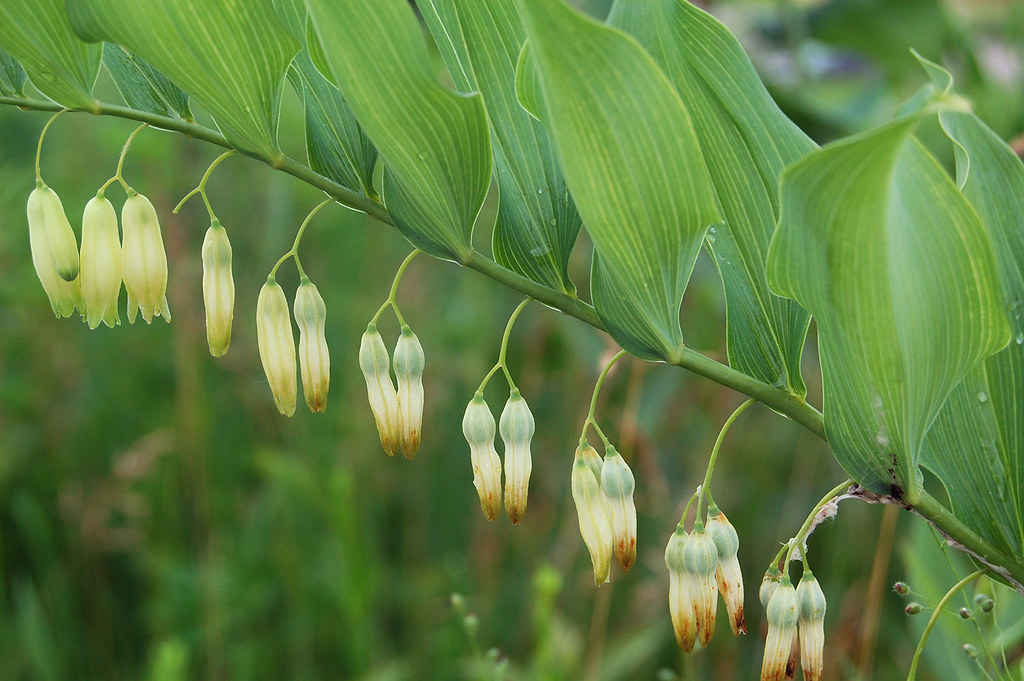



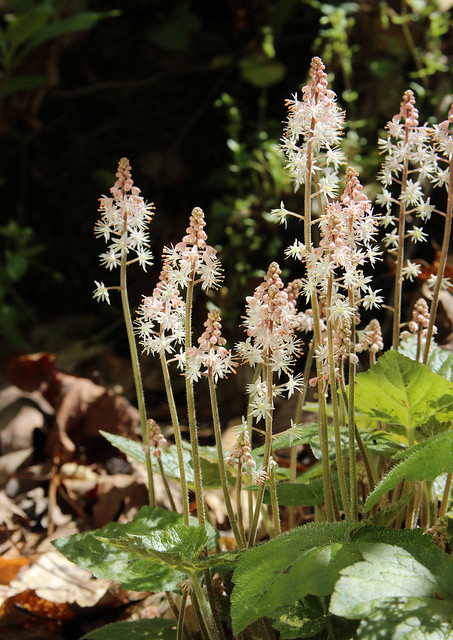
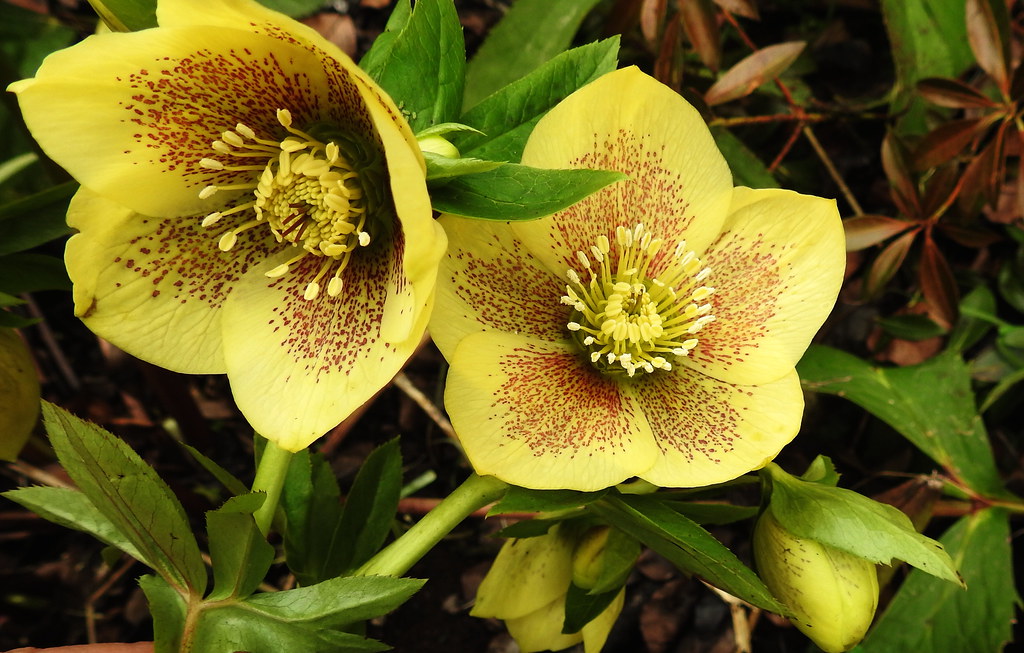
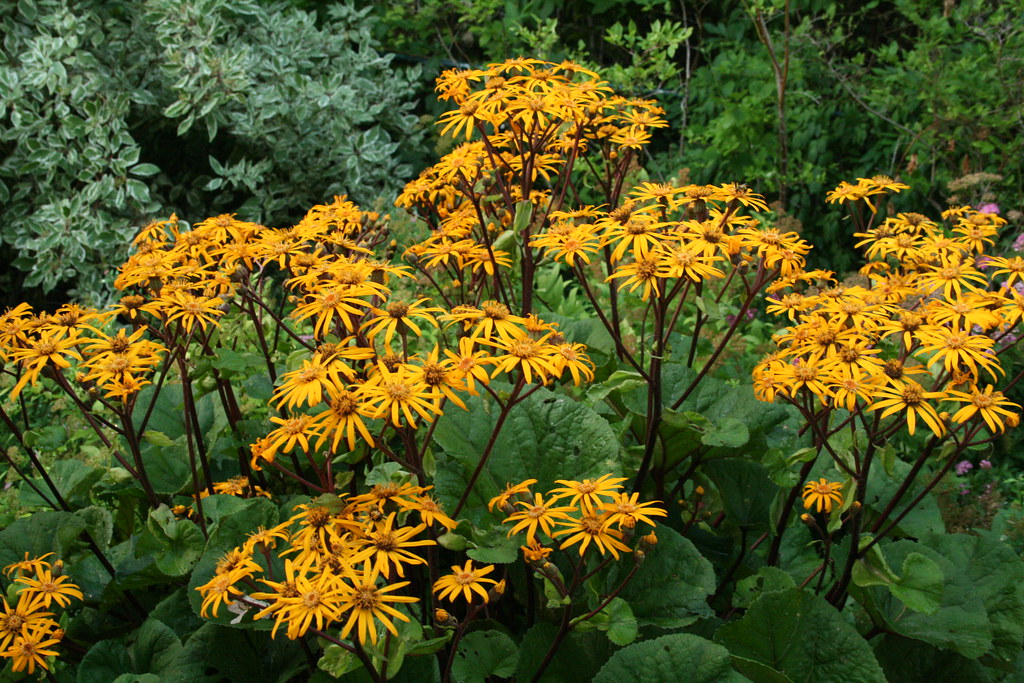


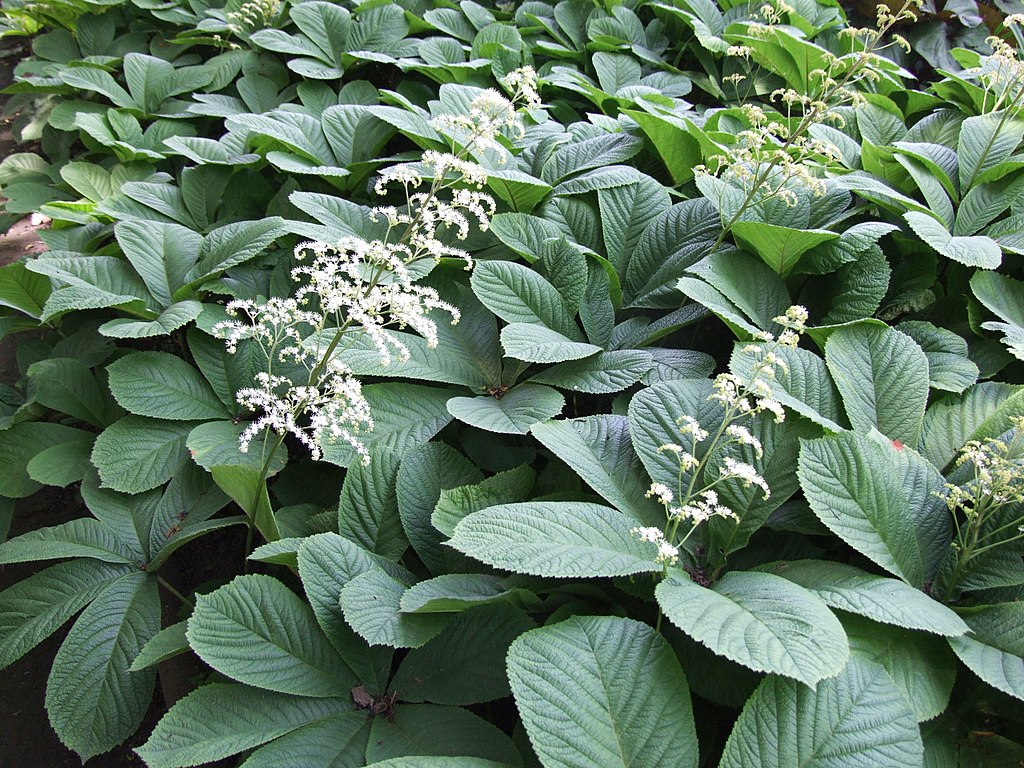
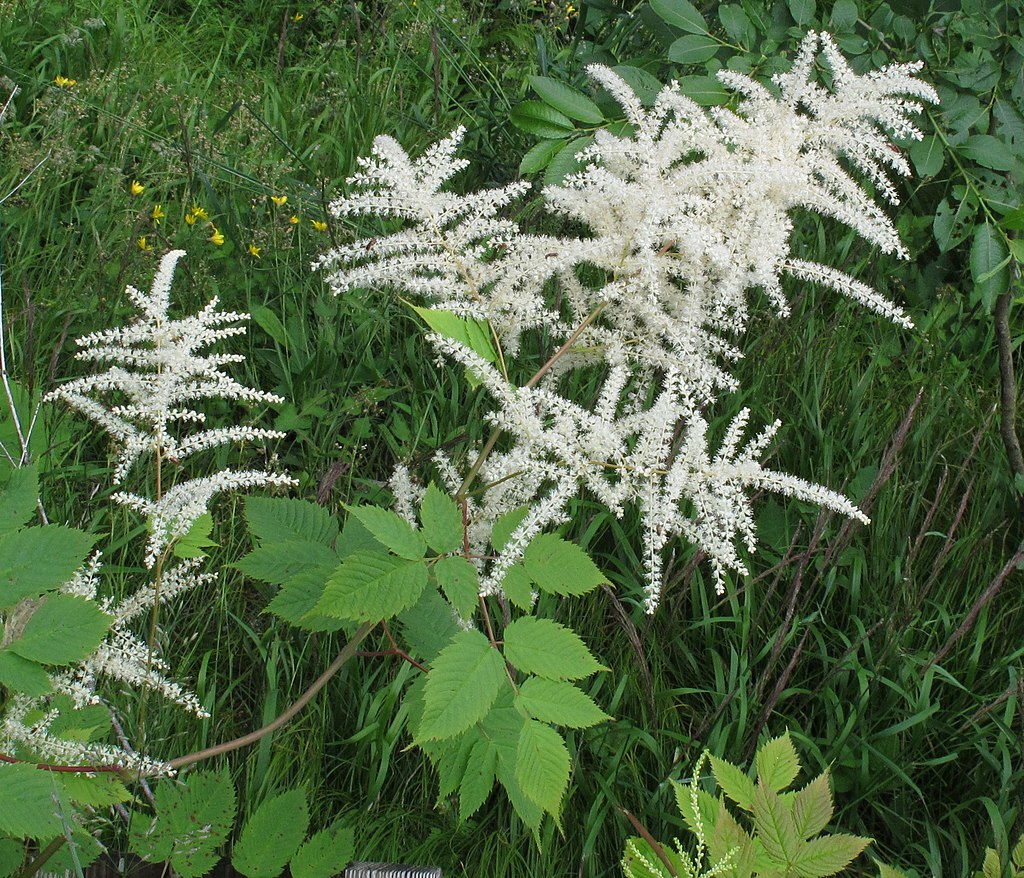


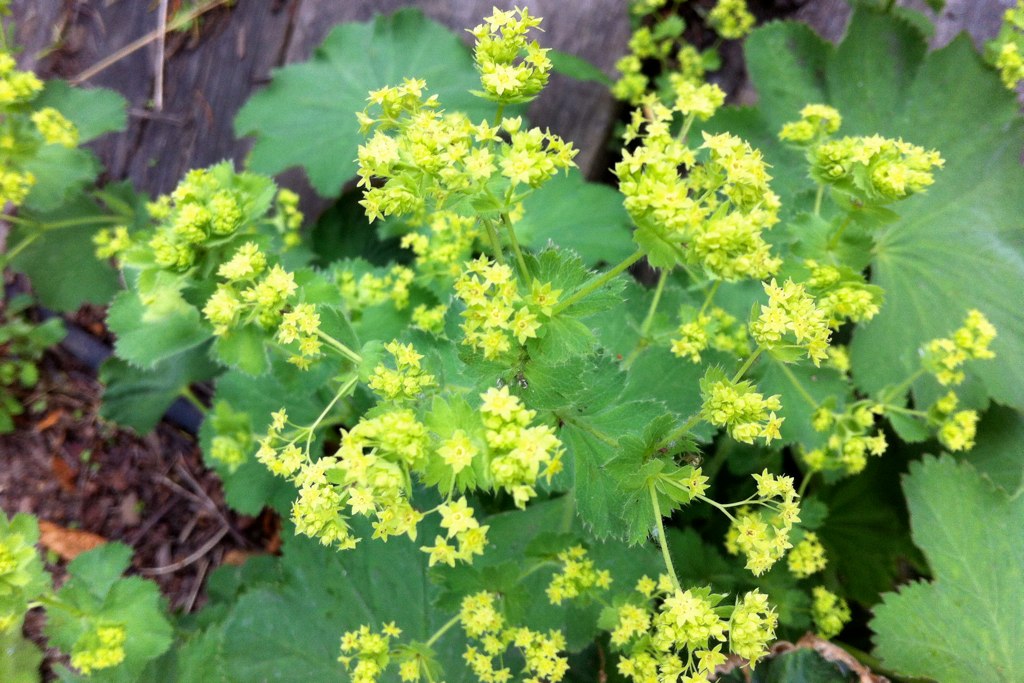
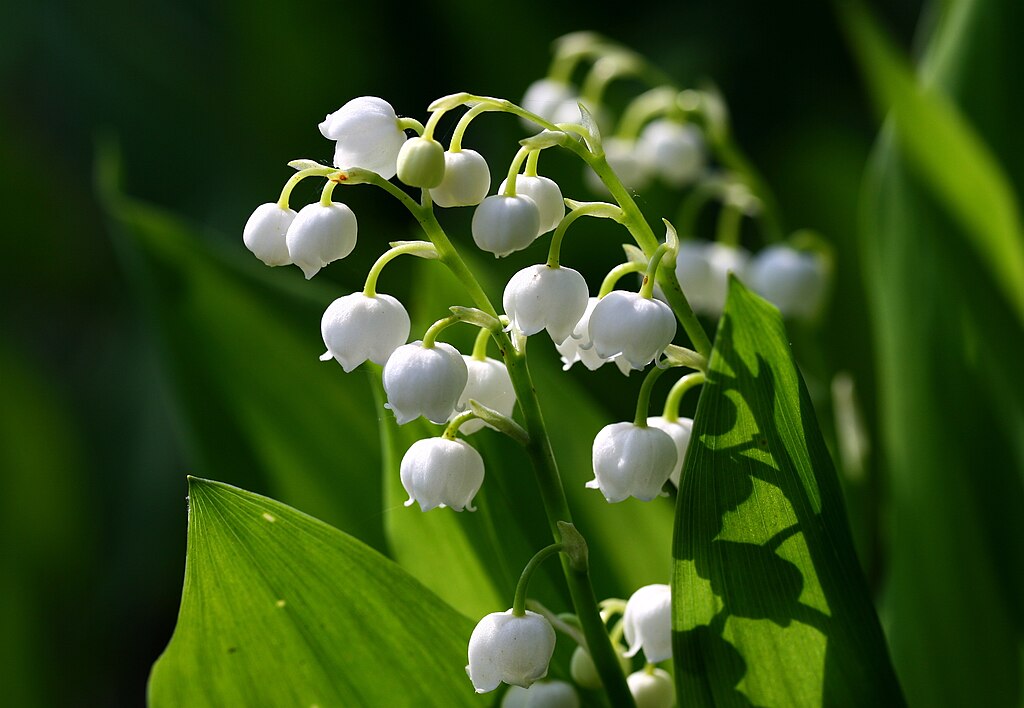



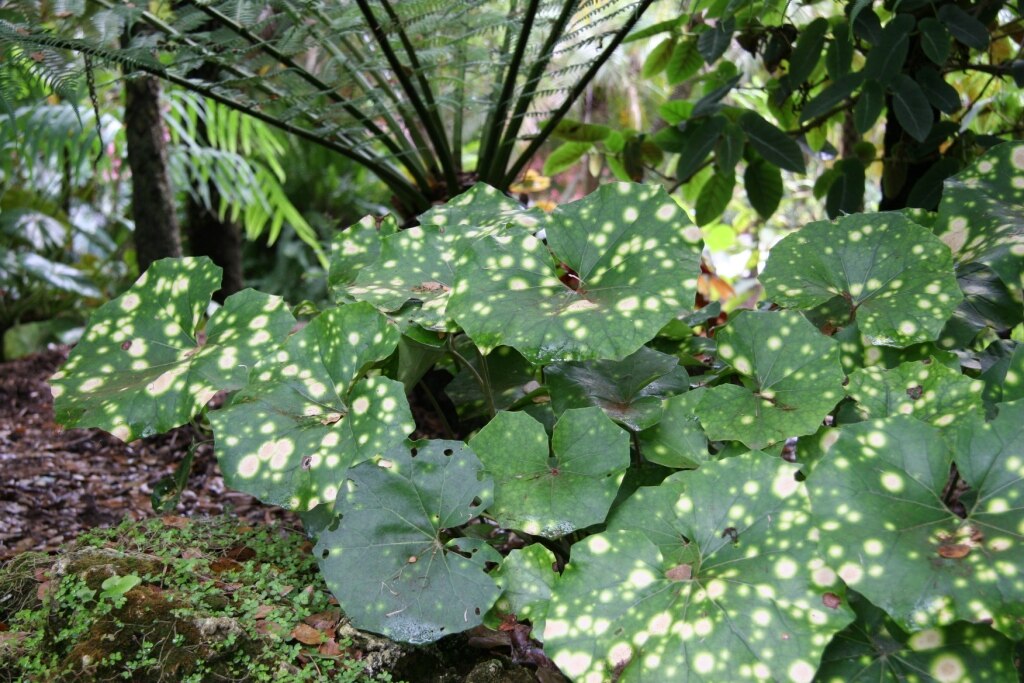



Such beautiful plants. I’m familiar with/many but have not seen most of these as bountiful in my own garden. Love foam flowers. When spring hits, I’ll find & plant many! Today here (west of Chicago) it is 12*!! Very frozen out there!